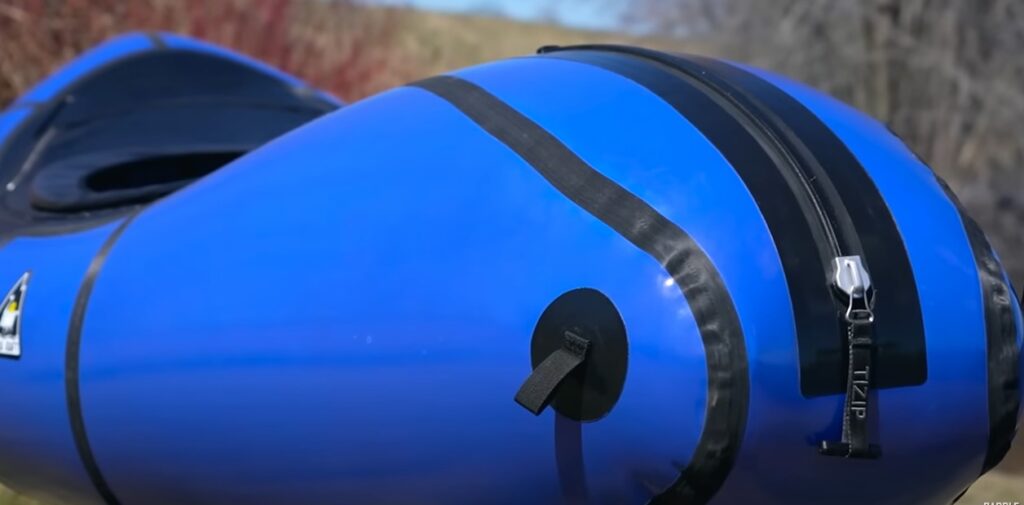Packrafts were invented as an ultralight and highly portable paddle craft to allow hikers and backpackers to take advantage of the backcountry waterways. Initially, packrafts were designed for lakes and mellow rivers, as they lacked the durability and performance to tackle rivers with significant whitewater.
That is no longer the case. There are now whitewater specific packrafts on the market, which allow paddlers to tackle very challenging whitewater runs. There are also a growing number of all-around packrafts, which are designed for use in both flatwater and in whitewater. This is where the Alpacka Expedition packraft fits in. The question we're going to answer in this article, is whether or not the Alpacka Expedition is the right packraft for you?
First though, I want to give a special shout-out to the American Canoe Association (ACA). They've been instrumental in promoting paddling safety and education, and created a free, on-line paddling safety course that I believe everyone should take the time to do. You can check it out here.

Is the Alpacka Expedition Packraft Easy to Set-up?
Packrafts are not large boats and they're made with a single air chamber. You simply attach the included inflation bag, and start ‘pumping'. While at first it seems as though it will take a long time to inflate, I was surprised how quickly I got the job done. In less than a few minutes the boat was inflated, and few extra hard breaths into the valve got the packraft to 1.5 psi – it's ideal pressure.
Once the hull is inflated, there are a few other small ‘set-up' related steps, like blowing up the seat and foot braces, and threading the tubing through the cockpit rim to create a rigid structure for a skirt to connect to. A well thought out design made these set-up steps quick and easy. Within 5 minutes, I was ready for the water.

What Material is the Alpacka Expedition Made With? Is the Alpacka Expedition Durable?
The Expedition is built with lightweight and durable fabric. The main body of the packraft is made with 210D TPU coated nylon. The floor of the boat is made with a much more robust 840D nylon with dual TPU coating. What does this mean? The number (210 or 840) refers to the density of fibers within the fabric. The floor fabric has 4x the fiber density, which makes it much tougher.
TPU coating refers to a highly durable, flexible, and waterproof plastic-like layer that is bonded to the fabric. The floor of the Expedition has dual TPU coating, which means the fabric is TPU coated on the outside, where it will get the most action, and on the inside. The benefit of having the TPU coating on the inside as well, is that if a the outer coating were to get a deep scratch, or enough abrasion to wear through, the inner TPU coating would provide a secondary defence that prevents any leaks.
The main body of the Expedition is made with 210D fabric that only has TPU coating on the outside. This means the main body of the boat is much less durable than the floor, and it doesn't benefit from having the inner TPU coating as a backup to prevent a leak. The benefit of making the main hull like this, is a significant reduction in weight. To put this into perspective, the NRS Neutron packraft, which has the same floor material, has a 420D dual TPU coated nylon for the main hull. This results in a packraft that is 12.2lbs instead of the Expedition's 8.4lbs. Of course, the trade off is that the NRS Neutron is significantly more durable.
How well does the Alpacka Expedition Perform?
The Alpacka Expedition is a typical packraft in that it is very stable, but performs very poorly on flatwater as compared to other paddle crafts on the market, including kayaks, canoes, and stand up paddle boards. The reason is simple. It's very short and wide, it has a flat hull, and it has no fins. The result is a boat that is highly stable, but very slow and doesn't track well.
In whitewater, the Expedition is a different story. It's still slow, but speed is not always important when paddling in whitewater. For most paddlers, stability and maneuverability are equally important, and the Expedition has plenty of both. I found the Expedition to be fun to paddle in whitewater, even though it lacked the high performance of a true whitewater kayak. I also really appreciated the boats deck and skirt, which kept water from filling the cockpit of the raft. This provided a consistent feel and reliable control throughout the rapid. For this reason, I believe experienced whitewater paddlers could effectively use the Expedition in whitewater up to and including Class 4.


Key Features of the Alpacka Expedition
The Expedition has a number of features that I really appreciated.
The outfitting in the Expedition is high quality and offers a great ‘performance' fit for great control in whitewater. This includes a high performance backbend and thigh hooks, and an inflatable foot rest.
The Expedition comes standard with a TiZip closure in the stern so that you can use the inside of the packraft as storage for multi-day trips. Here's a link to a multi-day trip that I did, using the inside of a packraft as storage.
The Expedition comes with a fixed deck, or a removable deck (for an extra $100), and a basic skirt that attaches to the deck to prevent water from getting into the cockpit. The skirt is a very basic nylon one. I was surprised at how effectively and reliable it did the job. I wasn't concerned that the skirt would come off in the whitewater, even though I was testing the packraft in some very significant class 3/4 rapids.


Overall Summary on the Alpacka Expedition Packraft
The Alpacka Expedition Packraft is an all-around packraft that's capable of handling flatwater to class 4 whitewater adventures. The Alpacka Expedition is well designed, well built, and confidence inspiring. At 8.4 pounds, the Expedition is extremely light for a boat that's capable of class 4 Whitewater. The trade-off for such a lightweight boat is durability. At $1725 – $1825 USD, the Expedition is also one of the more expensive packrafts.
To put this into perspective, the NRS Neutron all-around packraft that I tested this year is $1150 – $1195 USD. That's around $600 cheaper! What do you get with the Expedition for the extra $600? The Alpacka Expedition is a lighter boat (8.4lbs instead of 12.2lbs). It has higher performance outfitting, a deck and skirt. The Neutron is open-decked and self-bailing. This provides better control and makes the Alpacka Expedition usable in up to Class 4 whitewater, whereas the NRS Neutron is only practical in up to Class 3 whitewater. On the downside, the Expedition has a main body that is made with a light fabric (210D). This means the fabric won't be as durable.
What this means is that the Alpacka Expedition is a great boat for someone who has whitewater performance as a priority, and who is willing to give up some of their boat's durability for a significant weight savings.

Finally, I want to give another special shout-out to the American Canoe Association (ACA). They've been instrumental in promoting paddling safety and education. Check out their paddling course for more great information.
Check out these videos to watch Packraft Reviews









